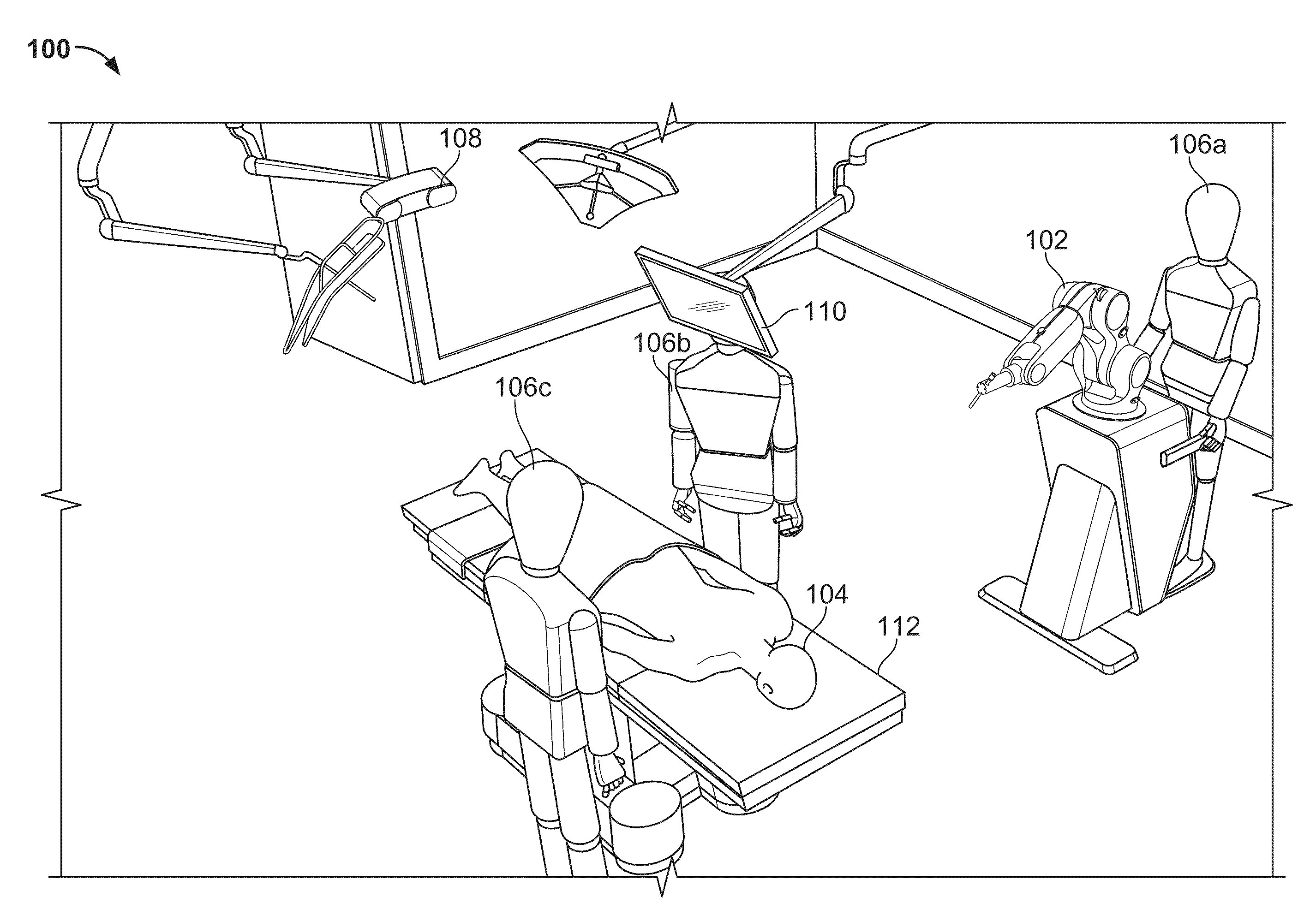Apparatus, systems, and methods for precise guidance of surgical tools
a surgical tool and applicator technology, applied in the field of applicators, systems and methods for precise guidance of surgical tools, can solve the problems of limited acceptance of robotic systems by surgeons and hospitals, extensive preoperative surgical planning, and high cost of current systems to own and maintain. the effect of simple preoperative surgery planning
- Summary
- Abstract
- Description
- Claims
- Application Information
AI Technical Summary
Benefits of technology
Problems solved by technology
Method used
Image
Examples
Embodiment Construction
[0064]FIG. 1 illustrates an example surgical robotic system in an operating room 100. In some implementations, one or more surgeons, surgical assistants, surgical technologists and / or other technicians, (106a-c) perform an operation on a patient 104 using a robotic-assisted surgical system. In many surgeries, surgeons do not have time or enough data (e.g. medical images which are obtained pre-operatively) to plan a surgical procedure pre-operatively. The disclosed technology enables a surgeon to plan intra-operatively through the systems hands-on control.
[0065]In some implementations, the surgeon defines the trajectory intra-operatively with little or no pre-operative planning. The surgeon may define the trajectory by positioning the end-effector in a desired position. As the surgeon moves the end effector, a projected trajectory may be displayed based on the position of the end-effector. The surgeon may view this display to adjust the position of the end-effector until he / she posit...
PUM
 Login to View More
Login to View More Abstract
Description
Claims
Application Information
 Login to View More
Login to View More - R&D
- Intellectual Property
- Life Sciences
- Materials
- Tech Scout
- Unparalleled Data Quality
- Higher Quality Content
- 60% Fewer Hallucinations
Browse by: Latest US Patents, China's latest patents, Technical Efficacy Thesaurus, Application Domain, Technology Topic, Popular Technical Reports.
© 2025 PatSnap. All rights reserved.Legal|Privacy policy|Modern Slavery Act Transparency Statement|Sitemap|About US| Contact US: help@patsnap.com



